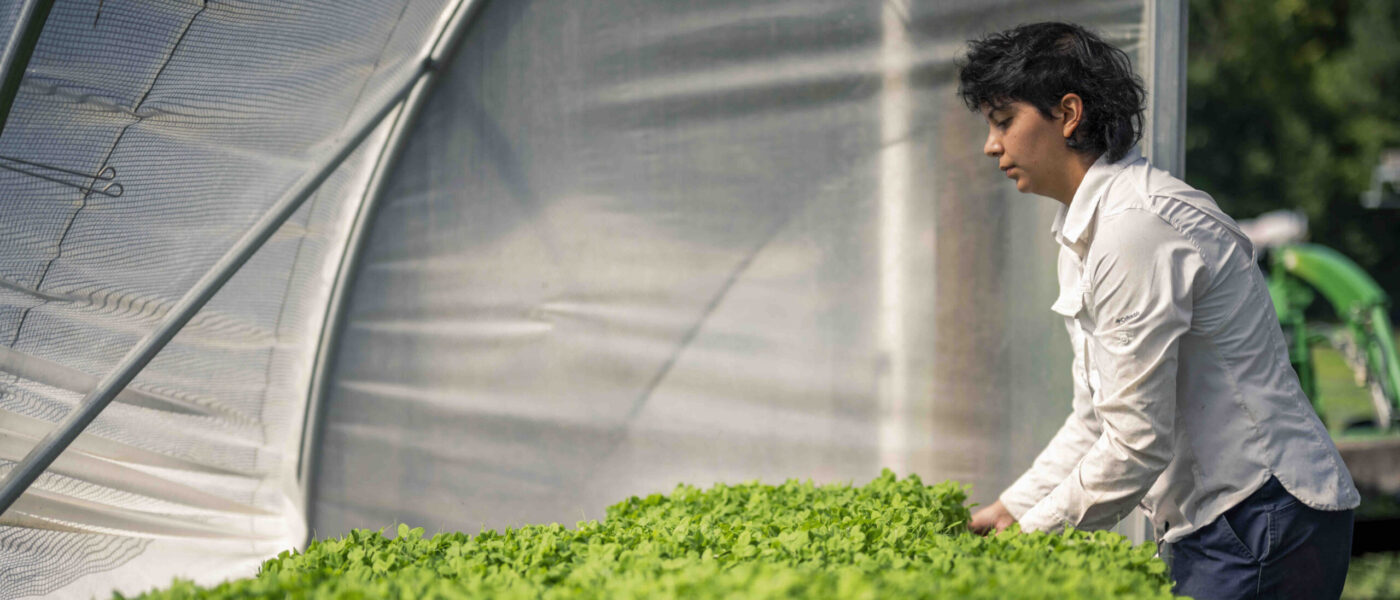May 2007
Dear Laura,
My family and I are conducting an experiment to live in New York City and cause no net environmental impact. I was already a vegetarian but in the interests of the No Impact experiment, we eat nothing that wriggles or has a face. My question to you is should everyone who wants to lessen their impact on the environment consider giving up meat?
Colin Beavan
New York, NY
Dear Colin,
First off, we love your blog. I can’t count how many times we have ended up around our “kitchen” table talking about your latest post or a particularly provocative comment. Keep up the good work!
This question is the million-dollar question right now. It comes up all the time and for good reason: most meat that is found in your average grocery store comes from factory farms or Confined Animal Feeding Operations (CAFOs), which can be environmental nightmares to stay the least. While researching my answer to your question, I came across a lot of astonishing data. So much that I had to streamline quite a bit. Please forgive if I go over details quickly or omit some. In short, the way we raise most of our meat, and the grains to feed the animals, has an incredibly heavy impact on our environment.
Growing and transporting feed to industrial livestock operations is a good place to start understanding the impacts of raising meat this way. Cheap government-subsidized corn has fueled the tremendous growth of industrial livestock agriculture, despite the fact that ruminant animals, like cows, do not naturally consume an all-grain diet. Today, livestock eat more than 70% of all the grains we grow in this country, and the methods used to grow the grains that feed these animals are almost completely dependent on petrochemicals and genetic modification. CAFOs also use large amounts of energy, in the form of fuels used to transport massive quantities of grain and to heat or cool the facility. Finally, once processed, this meat could travel up to 1,500 miles on average to get to your plate – consuming even more fossil fuels.
Water and air quality are also directly affected by factory farms and the feedlots. Manure runoff from lagoons can lead to fish kills, contaminated wells and human disease. CAFOs also produce large quantities of methane, which is a greenhouse gas, and contributes significantly to global warming. In fact, methane is the second-most plentiful greenhouse gas and the world’s agricultural livestock produce about 17% of the methane in the atmosphere.
So, why not just stop eating meat? My difficulty with this solution is that it implies that there is no other way. But the truth is that animals haven’t always been raised indoors on a diet of grain and antibiotics, and corn and soy haven’t always been grown with chemical fertilizers and GMOs. Beef, dairy cows, hogs and chickens all used to be raised out\doors on grass, native plants and other natural forage material, and many farmers are bringing back the tradition. Additionally, grain farmers are now growing crops organically to reduce pesticide use and soil erosion. There is definitely another way.
Family farmers are looking at new (and old) ways of producing high quality meats for local markets that are significantly less destructive to the environment, the animal’s quality of life, and human health. It is all about grass. For his recent book, The Omnivore’s Dilemma , author Michael Pollan spent a week on Polyface Farm with super-star grass farmer, Joel Salatin. In Chapter Two, All Flesh is Grass, Pollan describes the impact of Joel’s kind of farming:
“By the end of the season Salatin’s grasses will have been transformed by his animals into some 40,000 pounds of beef, 30,000 pounds of pork, 10,000 broilers, 1,200 turkeys, 1,000 rabbits, and 35,000 dozen eggs. This is an astounding cornucopia of food to draw from a hundred acres of pasture, yet what is perhaps still more astonishing is the fact that this pasture will in no way be diminished by the process – in fact, it will be the better for it, lusher, more fertile, even springier underfoot (this thanks to the increased earthworm traffic). Salatin’s audacious bet is that feeding ourselves from nature need not be a zero-sum proposition, one in which if there is more for us at the end of the season then there must be less for nature – less topsoil, less fertility, less life. He’s betting, in other words, on a very different proposition, one that looks an awful lot like the proverbially free lunch.”
Grass farmers or farmers raising grass-fed, pastured or grass-based livestock, are working hard to change the system. Intensive, rotational grazing takes a lot more work than you might imagine. Livestock move through a pasture in set enclosures so that they have fresh grass every day. This protects soil and root structures from damage caused by overgrazing, promotes manure composting and can increase the nutritional value of the meat itself. Farmers like Salatin who are raising more than one kind of livestock on pasture will move the animals through in sequence to further benefit the health of the pasture. For example, chickens may follow cattle in a diverse grazing system. The cows clean out the high rough forage, leaving the more tender grasses for the chickens. The birds also feed off of larvae and other nutrients left behind by the cow’s manure–they receive nourishment from the insects and prevent any parasitic outbreaks in future grazers.
Another grass farmer and author, Gene Logsdon, published an entire volume called All Flesh is Grass, in which he explains that animals can actually graze on grains in the field, saving the farmer the cost of buying, harvesting, and plowing over the field. Similar to a grass pasture, animals can follow one another in sequence through the field eating their way through the harvest. In this system, animals would be bred to be weaned when the crops are ready to be harvested so there is no extra waste or energy consumption.
Water is also protected through pasture farming. Instead of being a public health risk, manure becomes an asset to the overall health of the farm. Grazing allows the manure to compost naturally in the fields instead of being transferred to a lagoon, where it may leach or overflow into streams and rivers. The manure in turn becomes fertilizer for the pasture – improving the quality of soil, the grasses and in turn the quality of the meat from the animal that grazes on the pasture. That leaves us with air and energy.
Cows on pasture do create a little more methane than feedlot cattle because grasses have a higher fiber content than a corn diet. Methane, a byproduct of digestion, is produced when cows and other ruminant animals break down the fiber in grasses and grains they eat. However, the better managed the pasture, the higher number of native plant species, and the lower this methane emission can be. And new research in New Zealand and Canada shows that skilled management can create the potential to sequester carbon dioxide from the atmosphere into the soil, thus getting us closer to a zero net impact.
As far as energy is concerned, if the animals are outside, they don’t consume any energy to keep them comfortable. Family farmers have spent years experimenting with different sorts of breeds that are adapted to the climate and forage that their particular farm has to offer. Some breeds do better in the cold New England winters, in other words, and therefore don’t need a heated barn; others do better in the warm climates of the west and don’t need a cooled barn. As far as transportation, there’s no reason to truck in food when your livestock eat grass. And many farmers who invest this much time and energy into raising a top quality product for their consumers are selling locally at farmers markets, co-ops, farm stands, grocery stores and local restaurants. This can bring those food miles down significantly.
This might be my longest answer yet! It is a really complicated issue. And, there is a lot of gray area. Not all grass-fed animals eat only grass. Not all meat can be sold or processed locally because the regulations are complicated and often the local processing infrastructure is not developed. In short, though, it’s pretty simple, if you want to reduce your environmental footprint and still eat meat, you can come pretty close by finding a farmer who thinks like you do. If you can do that, you are supporting the creation of a solution, not just boycotting a problem.

